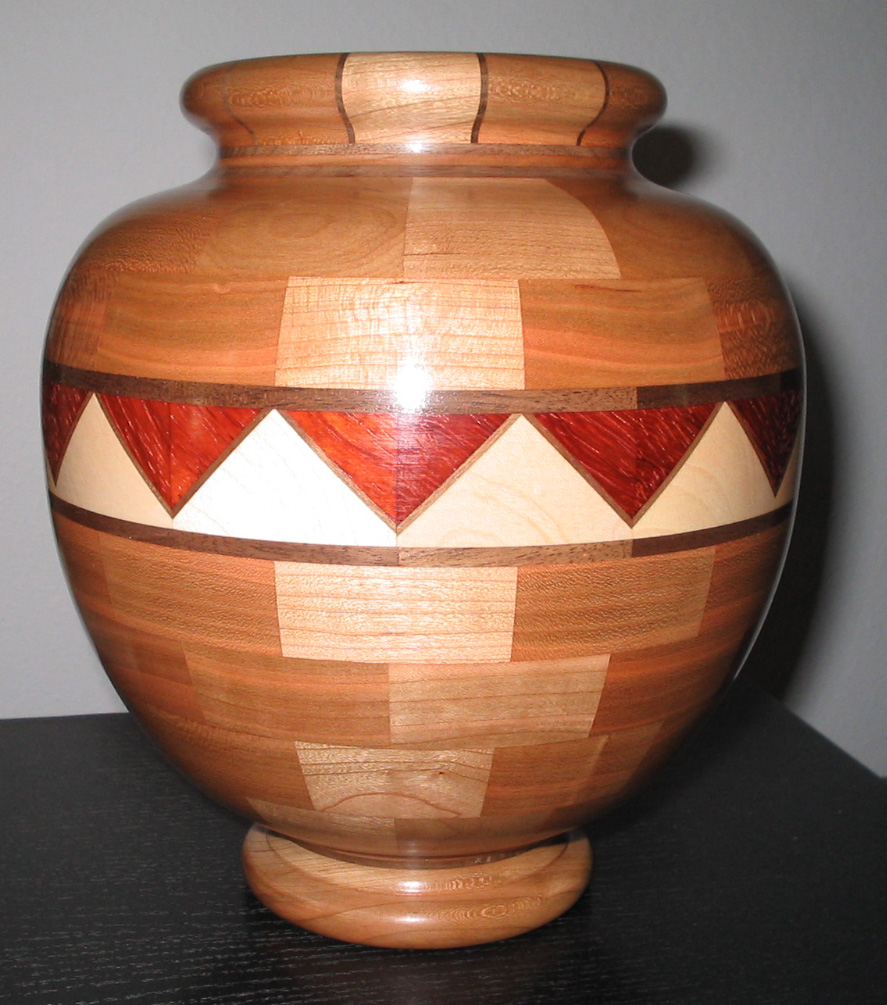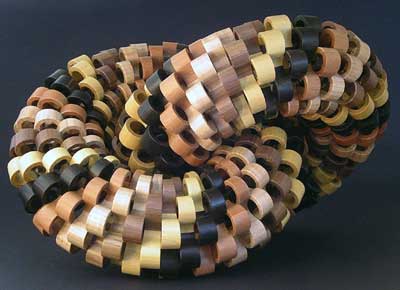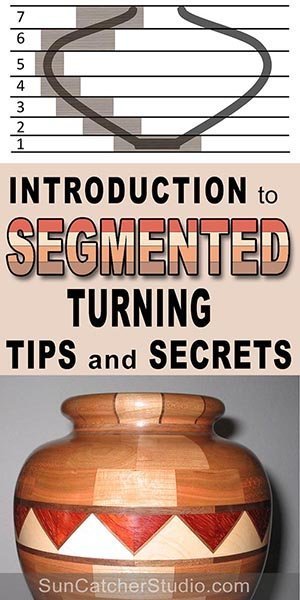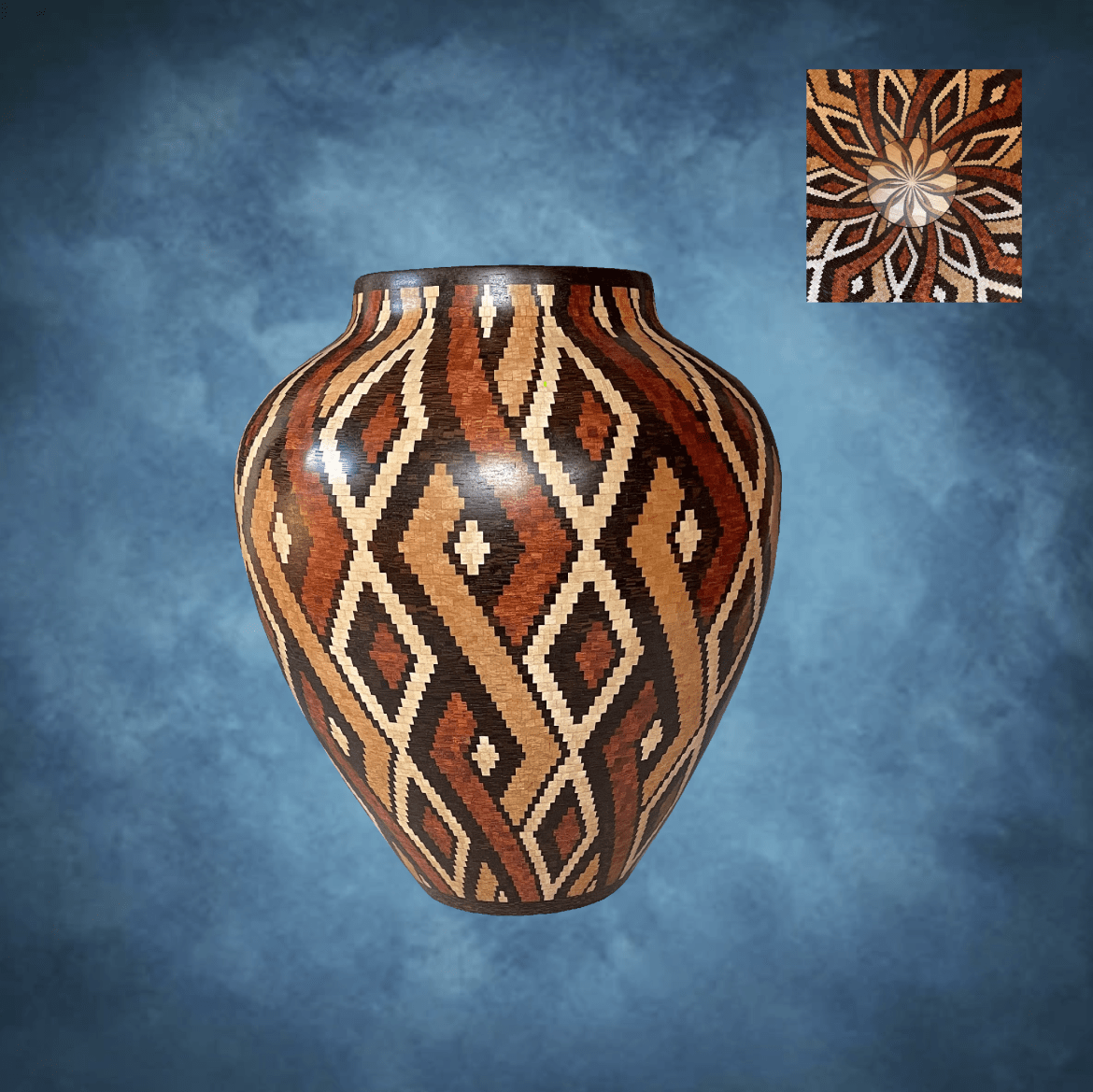Table of Contents
Segment woodturning involves creating intricate designs by gluing together different wood segments. This technique adds visual interest and unique patterns to turned wood objects.
Segment woodturning is a fascinating woodworking technique that combines skill and creativity. By gluing together various wood segments, artisans can produce visually stunning and intricate designs. These segmented pieces are then turned on a lathe to create bowls, vases, and other decorative items.
The method allows for endless design possibilities, making each piece unique. Woodturners can experiment with different wood species, colors, and grain patterns to achieve desired effects. Segment woodturning not only highlights the natural beauty of wood but also showcases the artisan’s craftsmanship and attention to detail. This technique continues to captivate both woodworkers and collectors alike.
Introduction To Segment Woodturning
Segment woodturning involves crafting intricate designs by gluing together different wood pieces before turning them on a lathe. This technique allows for unique patterns and stunning visual effects in finished products.
The Art And Craft
Segment woodturning is a unique art form. It involves joining small pieces of wood. These pieces create a larger design. The process needs great skill and patience. Each piece must fit perfectly. Mistakes can ruin the whole project. Artists use special tools for this craft. These tools help in shaping and smoothing the wood. The finished pieces are often beautiful and functional.
Why Choose Segment Turning?
Segment turning allows for creative expression. It offers more design options than solid woodturning. Artists can use different types of wood. This creates unique patterns and colors. The process also uses less wood. This makes it more eco-friendly. Projects can be small or large. This makes it suitable for many uses. The final products are often highly valued.
Essential Tools And Materials
Hardwoods are the best choice for woodturning. They are strong and durable. Popular options include oak, maple, and cherry. Softwoods are easier to turn but less durable. Pine and cedar are common softwoods. Wood grain and moisture content are also important. Always select dry wood for the best results.
A lathe is the main tool for woodturning. It spins the wood. Chisels and gouges are used to shape the wood. A face shield protects your eyes. A sharpening stone keeps your tools sharp. Sandpaper smooths the surface. Calipers help measure thickness. A workbench provides a stable surface.
Safety gear is essential for woodturning. A face shield protects your eyes and face. Ear protection is important when using loud tools. Dust masks keep you from breathing in wood dust. Gloves protect your hands. Fire extinguishers should be nearby. Proper lighting helps you see clearly. Always keep first aid kits handy.
Designing Your Project
Start with a simple sketch. Draw the basic shape of your project. Think about the size and proportions. Decide on the number of segments. Use a ruler for straight lines.
Choose wood species that are easy to turn. Maple, walnut, and cherry are good choices. Pick colors that contrast well. Dark and light woods look great together. Make sure the wood is dry and free of knots.
Use software to create precise designs. Programs like SketchUp or Segmented Project Planner are helpful. Download templates online for complex designs. Print them out and use them as guides. Accurate templates make your project easier.
Cutting And Preparing Segments
Getting accurate measurements is very important. Use a ruler or measuring tape. Mark the wood with a pencil. Double-check your measurements before cutting. This helps in avoiding mistakes.
Use a saw for cutting wood. A miter saw works best for angled cuts. Keep the wood steady while cutting. Wear safety goggles to protect your eyes. Cut slowly for clean edges.
Apply wood glue on the edges. Press the segments together. Use clamps to hold the pieces. Wait for the glue to dry completely. Check for gaps and fill them if needed.
Turning Techniques For Segment Woodturning
Start with rough turning to shape the wood piece. Use a lathe to remove excess material. Ensure the wood blank is balanced. This step sets the base for final shaping. Always wear protective gear like goggles and gloves.
Once the rough shape is done, proceed with final shaping. Use fine tools for detailed work. Ensure smooth curves and edges. This step defines the piece’s final form. Patience and precision are key here.
After shaping, start sanding the wood. Begin with coarse sandpaper and move to finer grits. This smooths the surface. Apply finishing oils or waxes to protect the wood. This also enhances its natural beauty. Your piece is now ready for display.

Credit: en.wikipedia.org
Advanced Segment Turning Projects
Complex patterns can make woodturning projects unique. Precise measurements are important. Use a template to help with accuracy. Layering different woods adds beauty. Patterns can be simple or intricate. Start simple, then try more complex designs. Patience is key in this process.
Combine wood with other materials like metal. Resin can also be used. This adds aesthetic appeal. Different materials need different tools. Experiment to find the best combinations. Make sure materials are compatible.
Alignment issues can occur. Always double-check measurements. Glue drying time is crucial. Use clamps to keep pieces in place. Sanding helps to smooth rough edges. Mistakes can happen. Learn from them and improve.
Finishing Touches
Choosing the right finish is crucial. Oil finishes bring out the wood’s natural beauty. Lacquer finishes provide a shiny surface. Polyurethane finishes offer strong protection. Each finish has its own benefits. Consider the wood type and use.
Always sand the wood first. This removes rough spots. Apply the finish in thin layers. Use a brush or a rag. Allow each layer to dry completely. Sand lightly between coats for a smooth finish. Follow product instructions carefully.
Keep your wood piece clean. Dust it regularly. Use a soft cloth. Avoid using harsh chemicals. Polish occasionally with a suitable product. Protect it from moisture and heat. Proper care ensures long-lasting beauty.

Credit: www.woodworkersjournal.com
Learning And Growing In Segment Woodturning
Joining woodturning communities helps you learn faster. Meet other woodturners to exchange ideas. Ask questions and get advice from experts. Share your projects and get feedback. Many communities have online forums and social media groups. These are great places to connect with others.
Workshops and classes offer hands-on learning. Skilled instructors teach you new techniques. You can practice and improve your skills. Many classes are available for all skill levels. Some workshops are short while others last several days. Look for local or online options to fit your schedule.
Experiment with different types of wood. Try new tools and techniques. Watch tutorial videos to learn advanced methods. Practice regularly to improve your craft. Set goals for each project and challenge yourself. Celebrate your progress and keep pushing your limits.

Credit: suncatcherstudio.com
Frequently Asked Questions
What Is The Angle Of A Segmented Bowl?
The angle of a segmented bowl depends on the number of segments. For a 12-segment bowl, each angle is 30 degrees.
What Are The Two Types Of Woodturning?
The two types of woodturning are spindle turning and faceplate turning. Spindle turning involves shaping wood along its length, while faceplate turning shapes wood on its face.
What Are The Abcs Of Woodturning?
The ABCS of woodturning are: A-Anchor your tool, B-Bevel the wood, C-Cut cleanly, and S-Speed control.
What Wood Turning Tools Should A Beginner Use?
Beginners should use a spindle gouge, roughing gouge, parting tool, skew chisel, and bowl gouge for woodturning. These tools cover basic needs.
Conclusion
Segment woodturning offers endless creativity for woodworking enthusiasts. This intricate craft combines precision with artistic flair. Whether you’re a beginner or expert, it’s rewarding. Experiment with designs, and let your imagination run wild. Dive into the world of segment woodturning today, and create unique, stunning wooden masterpieces.
